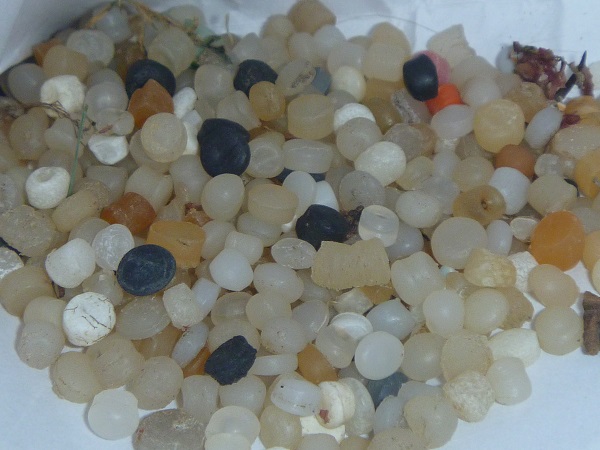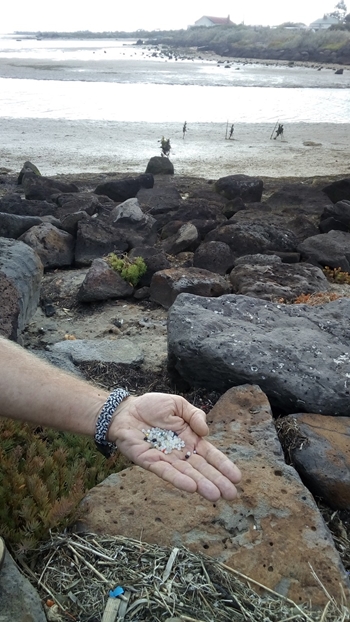What are plastic resin pellets?
Plastic resin pellets (also known as nurdles) are the raw material used in the manufacture of plastic products such as drink bottles, caps and food containers.

Appearance – Plastic resin pellets come in many different sizes and shapes. Most are less than 5mm in diameter and labelled as ‘micro-plastics’. While some may be brightly coloured, they are often colourless or opaque, and gradually turn shades of light yellow or brown over time. In water, they can resemble fish eggs.
Why are plastic pellets a problem?
- Pellets spilt by industry can enter freshwater and marine environments.
- Pellets can attract and carry chemical pollutants on their surfaces.
- Aquatic and marine animals that eat pellets can become sick or die.
- Pellets can enter the food chain and impact human health.
Plastic pellets can end up in the marine environment through spillage during ocean transport and handling. More commonly, they are lost from land-based sources such as trucks, factories or manufacturing sites.

Because the pellets are small and lightweight, they can easily enter waterways via stormwater run-off and end up in our beaches and bays. Pellets that enter the environment do not go away. Gradual weathering of the plastic means that they tend to fragment into smaller and smaller pieces.
As their appearance can resemble fish eggs, plastic pellets eaten by marine animals enter the food chain. Plastic fragments have been found in the gut of many marine animals such as seabirds, fish, turtles, and seals.
Increasingly, evidence also suggests that persistent organic pollutants and metals can attach to the surface of pellets and accumulate to toxic levels many times higher than that of surrounding seawater. Micro-plastics like plastic resin pellets may therefore be introducing pollutants into the food chain, increasing the potential for impacting human health.
A study on Lord Howe Island (600km east of Australia’s mainland) found significant levels of ingested plastic in shearwater seabirds, which resulted in reduced body condition and increased contaminant levels in their feathers (Lavers et al. 2014).
Similar findings were found in albatrosses, where high levels of ingested plastic were correlated with increased concentrations of chlorine, iron, lead, and other metals in feathers (Lavers & Bond 2016).
Managing plastic resin pellets for industry
Managing plastic resin pellets (nurdles) (publication 1701) is a fact sheet which can help businesses that produce, transport or use plastic resin pellets to manage the pellets and implement risk control measures.
Further reading:
• Andrady, A. 2011. Microplastics in the marine environment. Marine Pollution Bulletin, 62(8), pp1596-1605.
• Cole, M. Lindeque, P. Halsband, C & Galloway, T. 2011. Microplastics as contaminants in the marine environment: A review. Marine Pollution Bulletin, 62(12), pp2588-2597.
• Lavers, J. Bond A. L. & Hutton I. 2014. Plastic ingestion by Flesh-footed Shearwaters (Puffinus carneipes): Implications for fledgling body condition and the accumulation of plastic-derived chemicals. Environmental Pollution 187, pp124-129.
• Lavers, J. & Bond, A. I. 2016. Ingested plastic as a route for trace metals in Laysan Albatross (Phoebastria immutabilis) and Bonin Petrel (Pterodroma hypoleuca) from Midway Atoll. Marine Pollution Bulletin 110(1), pp493-500.
• Tangaroa Blue Foundation – Operation Clean Sweep® - www.opcleansweep.org.au